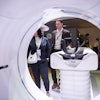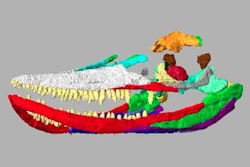Dear CT Insider,
Adrenal imaging is a notoriously tricky area. Incidental adrenal nodules are found in around 5% of patients who undergo CT, and it's vital to keep aware of the full range of pseudolesions and mimics, according to radiologists from a top London teaching hospital. They shared their experiences and gave a host of practical tips at RSNA 2018, winning a cum laude award for their efforts.
For patients with chronic low back pain, clinicians often recommend steroid therapy through an image-guided intervention. Swiss researchers have compared the ease of use and reliability of CT- and fluoroscopy-guided spinal injections, and their findings are worth a close look.
Also in the musculoskeletal imaging arena, French investigators have devised a new technique that uses augmented reality images based on CT scans to improve visualization preoperatively and intraoperatively for shoulder replacement surgery.
Meanwhile, a large international study has highlighted that massive differences in CT radiation dose levels persist in many countries, and the main factor behind these variations is how healthcare professionals use the equipment and conduct scans. The lead author, a professor of radiology at the University of California, San Francisco, has expressed serious concerns and called for urgent action.
Voxelized digital phantoms based on clinical breast CT images benefit from incorporating the realism and variability of actual patient data, but their accuracy is limited by the spatial resolution of the imaging device. To overcome this problem, a Dutch-Italian team has used machine-learning algorithms to generate "superresolution" digital breast phantoms.
This letter highlights only a few of the many articles posted recently in the CT Community. For the entire list, please check out the lineup below.




















